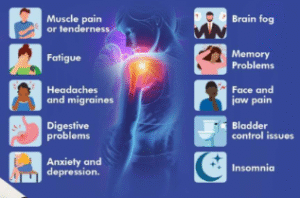Understanding the Duration of Fibromyalgia Flare–Ups
Living with fibromyalgia means navigating unpredictable waves of symptoms that ebb and flow without warning. One of the most frustrating aspects of this condition is the occurrence of flare–ups—periods where symptoms become more intense and disruptive than usual. These episodes can significantly impact quality of life, and many individuals living with fibromyalgia wonder the same thing: how long can fibromyalgia flare–ups last?
The answer is not one-size-fits-all. The duration of a flare–up can range from a couple of days to several weeks, influenced by a complex combination of personal health factors, environmental triggers, stress levels, and even treatment approaches. By understanding the potential timeline of a flare and what affects it, people with fibromyalgia can better prepare for these episodes and take steps to recover more quickly.
Typical Length of a Fibromyalgia Flare–Up
Most fibromyalgia flare–ups last between a few days and a couple of weeks. In milder cases, symptoms may spike for two to three days before gradually returning to baseline. For others, particularly during times of chronic stress or after significant physical exertion, flare–ups may persist for several weeks or even longer. Some people experience long-lasting flare states that blend into one another, making it difficult to distinguish between flares and the normal progression of the condition.
There is no universally fixed duration because fibromyalgia is a multifaceted condition. Pain thresholds, fatigue levels, coexisting conditions, and daily habits all play a role in determining how long a flare lasts.
Factors That Influence Flare–Up Duration
Several elements can extend or shorten the duration of a fibromyalgia flare–up:
1. Stress and Emotional Turmoil
Emotional stress is a leading contributor to prolonged flare–ups. Anxiety, depression, and unresolved personal challenges can keep the nervous system in a heightened state of sensitivity, making it harder for symptoms to recede.
2. Sleep Quality
Poor sleep or irregular sleep patterns can fuel flare–ups. Lack of deep restorative sleep prevents the body from healing and often results in a prolonged period of heightened pain and fatigue.
3. Overexertion and Physical Strain
Engaging in intense physical activity, even something seemingly routine like a long walk or house cleaning, can provoke a flare that lingers. The longer the body is under stress, the more extended the recovery period may be.
4. Hormonal Changes
Hormonal fluctuations, particularly in women during menstruation, menopause, or pregnancy, can extend the life of a flare–up. Hormones influence pain perception and fatigue levels, contributing to a longer and more intense episode.
5. Environmental Triggers
Changes in weather, temperature extremes, and even air pressure can influence flare–up length. Cold, damp conditions or rapid weather changes are commonly reported triggers that make recovery more difficult.
Signs That a Flare–Up Is Ending
Recognizing when a flare–up is coming to a close can help individuals prepare for resuming normal activities and reducing the risk of another episode. These signs include:
- Decrease in muscle pain and joint stiffness
- Gradual return of physical and mental energy
- Improved mood and emotional stability
- Better sleep quality and fewer nighttime disturbances
- Reduction in sensory sensitivity, including to light and sound
Although these improvements may not happen all at once, noticing a consistent positive trend is a good sign that the flare is winding down.
Coping Strategies to Shorten Flare Duration
While there is no cure for fibromyalgia, certain practices may help reduce the duration of flare–ups and ease symptoms:
Pacing and Rest
Avoiding overexertion and building rest into the day is crucial. Short naps, light stretching, and breaking tasks into smaller chunks can help prevent the flare from worsening.
Mindful Movement
Gentle exercises like yoga, tai chi, or swimming can promote circulation and prevent stiffness. When done in moderation, these movements can help ease the body out of flare mode.
Stress Management
Incorporating relaxation techniques such as deep breathing, meditation, or progressive muscle relaxation can calm the nervous system and reduce symptom intensity.
Anti-Inflammatory Diet
Eating a balanced, anti-inflammatory diet rich in omega-3 fatty acids, vegetables, whole grains, and lean proteins may help reduce internal inflammation and flare severity.
Regular Sleep Routine
Maintaining a consistent bedtime and wake-up schedule, along with good sleep hygiene, supports the body’s ability to heal and recalibrate during a flare–up.
Medical Support
Doctors may recommend medications such as muscle relaxants, pain relievers, antidepressants, or anticonvulsants to manage flare–ups. Tailored physical therapy and counseling can also be beneficial.
Chronic Flare–Ups Versus Isolated Episodes
Some people experience flare–ups as isolated events separated by long symptom-free periods, while others face chronic flare-like states. When flare symptoms persist for months without relief, it may indicate the need for a new treatment approach or a deeper investigation into overlapping conditions like lupus, chronic fatigue syndrome, or rheumatoid arthritis.
Long-lasting flare–ups may also be influenced by medication side effects, nutritional deficiencies, or undiagnosed sleep disorders. In these cases, working with a multidisciplinary care team becomes essential for identifying root causes and restoring quality of life.
FAQs About How Long Fibromyalgia Flare–Ups Last
1. Can fibromyalgia flare–ups last for months?
Yes, in some individuals flare–ups can persist for several months, particularly if not managed properly or triggered by ongoing stress or illness.
2. What is the average flare–up length for most people?
Typically, flare–ups last between three days and two weeks, depending on severity and lifestyle factors.
3. Do flare–ups become shorter over time with treatment?
With effective management, people often experience shorter and less intense flare–ups as they learn their triggers and coping strategies.
4. Are long flare–ups a sign of worsening fibromyalgia?
Not necessarily, but persistent flares may indicate that current management strategies are insufficient or that other health issues are contributing.
5. Can I prevent flare–ups entirely?
While not entirely preventable, flare–ups can be minimized with proper self-care, stress management, and medical support.
6. Should I stay active during a flare–up?
Gentle movement is beneficial, but it’s important to avoid overexertion. Listen to your body and rest when needed.
Conclusion
The duration of fibromyalgia flare–ups can be unpredictable and vary from one person to another. While some flares last just a few days, others may linger for weeks or even longer. Understanding what influences flare duration and recognizing early warning signs can help individuals take swift action to reduce their severity and frequency. Through a combination of rest, stress management, proper medical care, and a proactive mindset, it is possible to regain control and live more comfortably despite the challenges of fibromyalgia.



